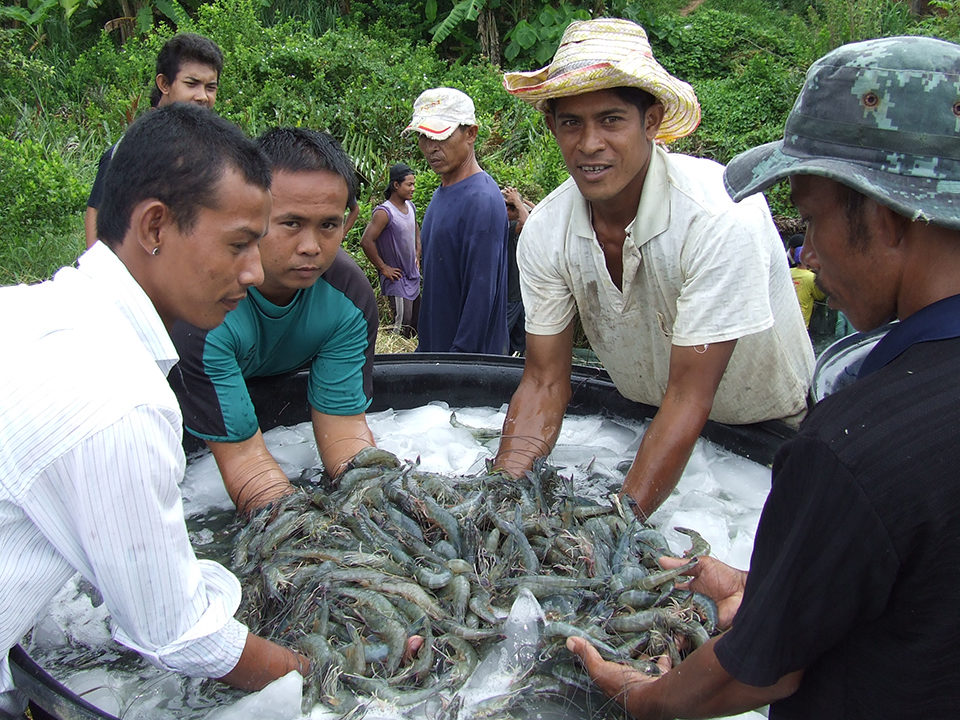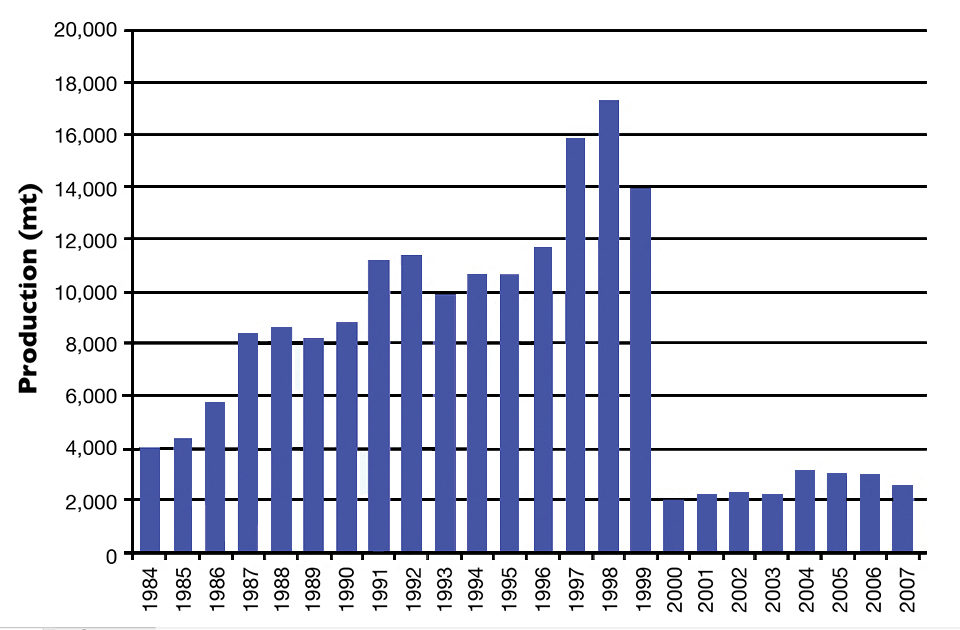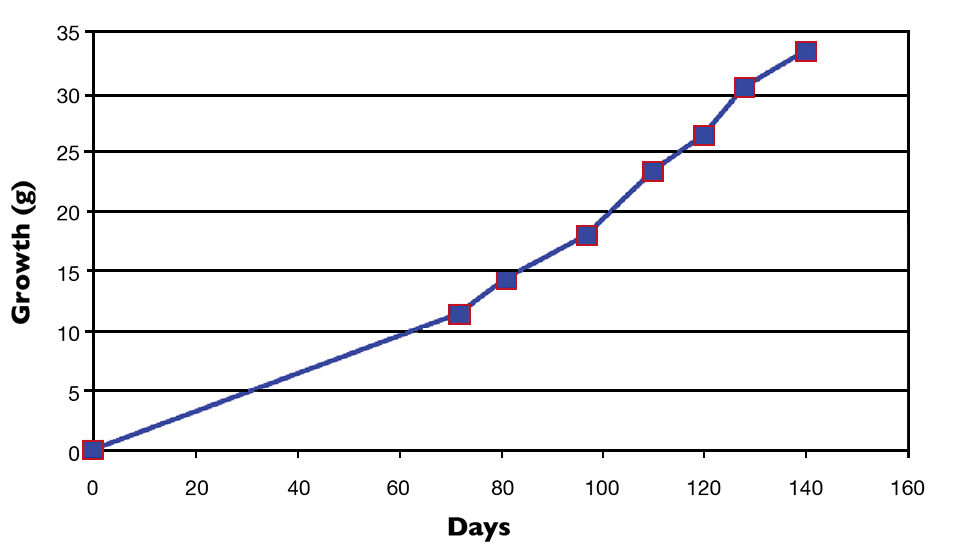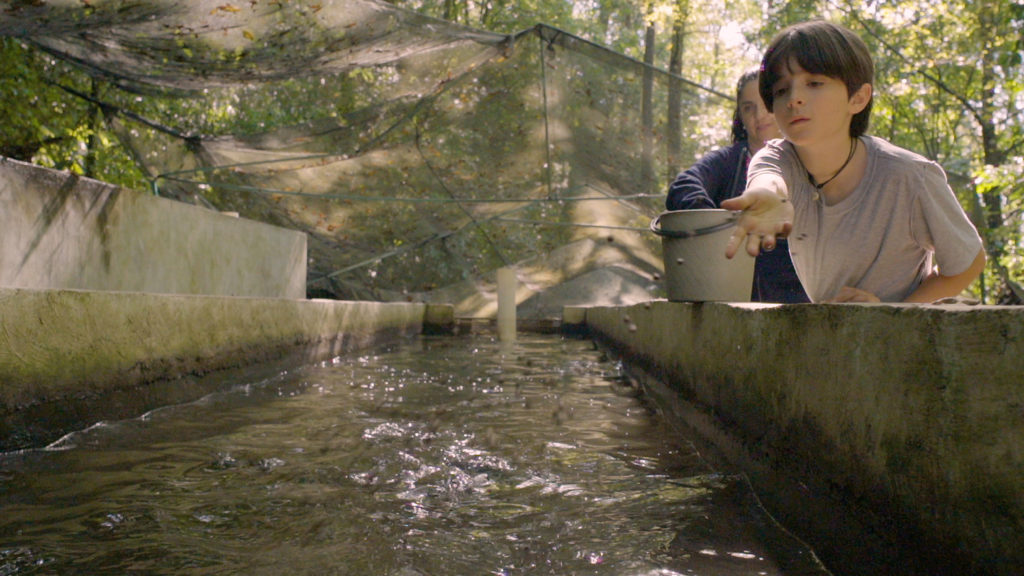L. stylirostris could diversify white shrimp monopoly

The range and biology of Pacific blue shrimp (Litopenaeus stylirostris) are quite similar to their conspecific species, the Pacific white shrimp (L. vannamei). Their anatomies are almost identical, differing in only a few minor taxonomic characteristics – such as number of rostral teeth – which are used to identify the species at postlarval stages.
The native ranges of blue shrimp and white shrimp are identical. Both occur along the tropical eastern Pacific coast of Mexico, Central America and northern South America, and both are limited by minimum surface seawater temperatures down to 20 degrees-C. Fishermen in the region regularly catch both species.
Details of the open-thelycum reproductive anatomy and biology of blue shrimp are almost identical to those for L. vannamei. In spite of these similarities, the two species do not hybridize. The production of L. stylirostris nauplii in commercial hatcheries is virtually identical to L. vannamei hatchery techniques.
Ideal environment
Table 1 lists optimum environmental parameters for farming L. stylirostris. The species is less tolerant of low salinity than L. vannamei and requires salinities above 10 ppt. Its optimum salinity is 25 to 35 ppt. L. stylirostris is more sensitive to low dissolved-oxygen (D.O.) levels than L. vannamei. Optimum culture conditions include D.O. concentrations of at least 4 mg/L.
Wyban, Optimum environmental conditions for farming, Table 1
| Acceptable Range | Optimum | |
|---|---|---|
| Dissolved oxygen (mg/L) | 3.5-10.0 | 4.0 or more |
| Temperature (° C) | 20-32 | 28-30 |
| Salinity (ppt) | 10-35 | 25-35 |
| Feed | 35-45% protein | 40% or more |
| Stocking density (m2) | 25-500 | 120 |
Both white and blue shrimp are considered omnivorous scavengers or detritus feeders. Nutritional studies by D. W. Moore and C. W. Brand in 1992 showed that L. stylirostris require a higher protein content in applied feeds than L. vannamei. Studies at High Health Aquaculture in Hawaii, USA, have shown that L. stylirostris grow very well on a standard 40 percent-protein diet for black tiger shrimp, Penaeus monodon.
Farming blue shrimp
L. stylirostris have been farm raised in Latin America for more than 30 years and in New Caledonia for 20 years. In Latin America, L. stylirostris were typically produced in extensive farm systems, often in polyculture with L. vannamei. This resulted from the industry’s use of wild postlarvae, since wild larvae for L. vannamei and L. stylirostris often co-occur.
In New Caledonia, a small industry based entirely on L. stylirostris farming has evolved. This industry is mostly semi-extensive culture growing L. stylirostris in large, open ponds without aeration and producing a single crop per year. New Caledonia exports its farmed shrimp to Japan and France and obtains a very high price for its product.
It is interesting that at harvest in polyculture systems, L. stylirostris are always at least one size class larger than L. vannamei. Blue shrimp are capable of rapid 2 grams a day growth at high (100 per square meter) density up to 35 grams in size. Both blue and white shrimp grow from postlarvae to 20-g size at this rate, but above that size, L. vannamei growth usually slows to about 0.12 grams per day. In New Caledonia, typical harvest sizes of up to 35 grams are obtained in a single crop of 200 days.
Another major culture benefit of blue shrimp is that they tolerate a lower temperature regime than white shrimp. While L. vannamei feeding and growth slow at pond temperatures below 27 degrees C, L. stylirostris grow well down to 24 degrees-C. Blue shrimp could be grown in Asia during cool-weather seasons when pond temperatures are sub-optimal for L. vannamei.
Figure 1 shows the annual global production of L. stylirostris based on United Nations Food and Agriculture Organization (FAO) numbers. The sharp increase in production between 1994 and 1999 was due to a massive switch to L. stylirostris farming in Latin America following widespread devastation at L. vannamei farms caused by Taura syndrome virus (TSV).

Because L. stylirostris are naturally resistant to TSV, they were replacing L. vannamei as a species of choice. However, by 1999, TSV-resistant L. vannamei stocks became available, and farmers returned to L. vannamei. In 2000, the 2,000-metric ton annual volume of L. stylirostris represented production by the New Caledonia industry.
Culture systems
While L. stylirostris have been farmed in Latin America for 30 years, nearly all of that production was based on extensive culture. Stocking densities of 5-10 postlarvae per square meter in huge ponds of 3 to 5 hectares (ha) each with no aeration and poor feed quality are standard. These systems do not provide a meaningful comparison to Asia’s shrimp-farming potential, which is technology-based using much higher stocking densities and aeration.
One data set of intensive farming using L. stylirostris came from the company Marine Culture Enterprises (MCE). Located in Hawaii, USA, and funded by Coca-Cola, it developed a superintensive shrimp-farming system using raceways in greenhouses.
MCE undertook an elaborate research and development program in which production trials and market studies compared L. vannamei, L. stylirostris and P. monodon as candidate species. Based on those rigorous tests, MCE concluded that L. stylirostris had the best chance for commercial success in superintensive systems. As reported by researchers Moore and Brand, the facility produced 20-g shrimp in 125-day cycles with harvest biomass up to 7 kg/m2.
High health shrimp
At High Health Aquaculture, which owns the world’s most diverse germplasm collection of specific pathogen-free (SPF) shrimp, a founding stock of blue shrimp was imported from Ecuador to the company’s breeding facility in Kona, Hawaii, USA, as postlarvae from wild L. stylirostris broodstock in 1994. The shrimp were screened for pathogens at least twice per generation using both histology and polymerase chain reaction testing at the University of Arizona. All pathogen screenings were negative.
High Health’s SPF L. stylirostris are generation F14 and selected for fast growth every generation. The blue shrimp’s resistance to TSV – confirmed by lab challenge testing – was one of the principal reasons for High Health Aquaculture’s development of its SPF stock of the species.
While some stocks of L. stylirostris are susceptible to infectious hypodermal and hematopoietic necrosis virus (IHHNV), challenge data from Dr. Jim Brock indicated the SPF L. stylirostris stock from High Health was also resistant to IHHNV. Like other shrimp, L. stylirostris are susceptible to white spot virus.
Thailand trial
Thailand is the world’s leading supplier of farmed shrimp, and more than 99 percent of its production is white shrimp. The Thai industry is concerned about this high concentration in one species and wants to study crop diversification.
To this end, High Health Aquaculture prepared a comprehensive species risk assessment for introducing SPF blue shrimp to Thailand for the Thai Department of Fisheries (DOF) in October 2009. Based on that document, the DOF issued a permit for Sarasin Hatchery to import SPF blue shrimp broodstock. High Health shipped the F13 broodstock to Sarasin in January.
The hatchery stocked 300,000 postlarvae in a 3,200-square-meter commercial shrimp pond in Phang-Nga at 94/m2. A high 30 hp/ha level of aeration, similar to that used for Thailand’s intensive farming with L. vannamei, was applied. A commercial P. monodon diet was used throughout. Individual shrimp sizes were monitored by pond sampling (Fig. 2).

The total production of 7,200 kg of 30-count shrimp after 140 days was exciting (Table 2). Because of the large 33-g size of the shrimp harvested, the pond-side value of the crop was equivalent to about $7.57/kg. The gross profit was equivalent to about $36,185.
Wyban, Production statistics for SPF blue shrimp, Table 2
| Crop duration (days) | 140 |
| Harvest size (count/kg) | 30 |
| Harvest size (g) | 33 |
| Daily growth (g) | 0.24 |
| Total production (kg) | 7,200 |
| Production (mt/ha) | 22.5 |
| Feed-conversion ratio | 2.19 |
(Editor’s Note: This article was originally published in the January/February 2011 print edition of the Global Aquaculture Advocate.)
Now that you've reached the end of the article ...
… please consider supporting GSA’s mission to advance responsible seafood practices through education, advocacy and third-party assurances. The Advocate aims to document the evolution of responsible seafood practices and share the expansive knowledge of our vast network of contributors.
By becoming a Global Seafood Alliance member, you’re ensuring that all of the pre-competitive work we do through member benefits, resources and events can continue. Individual membership costs just $50 a year.
Not a GSA member? Join us.
Author
-
Dr. Jim Wyban
High Health Aquaculture, Inc.
73-4460 Kaahumanu Highway #117
Kailua-Kona, Hawaii 96740 USA[109,111,99,46,108,105,97,109,103,64,110,97,98,121,119,46,109,105,106]
Related Posts

Health & Welfare
A comprehensive look at the Proficiency Test for farmed shrimp
The University of Arizona Aquaculture Pathology Laboratory has carried out the Proficiency Test (PT) since 2005, with 300-plus diagnostic laboratories participating while improving their capabilities in the diagnosis of several shrimp pathogens.

Responsibility
A look at integrated multi-trophic aquaculture
In integrated multi-trophic aquaculture, farmers combine the cultivation of fed species such as finfish or shrimp with extractive seaweeds, aquatic plants and shellfish and other invertebrates that recapture organic and inorganic particulate nutrients for their growth.

Responsibility
A look at various intensive shrimp farming systems in Asia
The impact of diseases led some Asian shrimp farming countries to develop biofloc and recirculation aquaculture system (RAS) production technologies. Treating incoming water for culture operations and wastewater treatment are biosecurity measures for disease prevention and control.

Intelligence
A motive, and a market, for farmed fish in Mexico
Boasting ample areas for aquaculture and a robust domestic demand for seafood – not to mention its close proximity to the U.S. market – a land of opportunity lies in Mexico. Fish farming is primed to meet its potential south of the border.



